Results 6,191 to 6,200 of 12096
Thread: Anandtech News
-
08-08-16, 08:32 AM #6191
Anandtech: The Skylake Core i3 (51W) CPU Review: i3-6320, i3-6300 and i3-6100 Tested
Out of every generation of Intel processors, the headline acts are the high core count parts, the ones with a high-frequency or the most expensive models. Of course, any manufacturer that has a high performing halo product will want that story out of the door on day one, but for typical user sales, it is the mid-range that is more relevant. The Intel Core i3 line comes without any Turbo, offering a flat frequency at load, and is synonymous with dual-core configurations with hyperthreading. In this review, we test three of the Core i3 processors, the i3-6100, the i3-6300 and i3-6320, all of which are set at a 51W TDP.
More...
-
08-09-16, 06:39 AM #6192
Anandtech: AMD Releases Radeon Software Crimson Edition 16.8.1 Hotfix
Hardly a week and a half has gone by and AMD has released another driver update. Of course with the flood of newly released cards we have seen released this summer I’m almost surprised driver updates aren’t more common. Along with new cards we get fixes for the Radeon RX 480, Crossfire, and a couple other applications. A Crossfire profile is even thrown in for good measure.
AMD Radeon Software version 16.8.1 brings the driver version to 16.30.2511, continuing the driver branch introduced with RTG’s last update. With this driver update we are brought support for the AMD Radeon RX 470 and RX 460, which both saw release over the past few days.
Of course it’s not an update without a few fixes. The first stop this week is some fixes for the Radeon RX 480. Previously the max memory overclock available to the RX 480 in Radeon WattMan was too low and has now been resolved, and low frame rate and stuttering issues in Wolfenstein: The Old Blood have been amended as well. In Overwatch there were problems with stability in the form of an application crash when playing on an RX 480 setup with Crossfire enabled. Continuing with Crossfire, DOTA2 was struggling with lower than expected performance while The Division experienced poor Crossfire scaling in some low resolution configurations.
Following through with the other fixes Firefox should no longer experience an application crash when hardware acceleration is enabled for content playback, and Radeon Settings should now report the correct Vulkan API version number. To finish off the fixed issues, updating drivers through Radeon Settings should go smoother now with a fix for Radeon Settings failing previously with an error message. Along with support for new cards and a list of fixes, AMD also gave us a Crossfire profile for Codemasters F1 2016.
As always, those interested in reading more or installing the updated hotfix drivers for AMD’s desktop, mobile, and integrated GPUs can find them either under the driver update section in Radeon Settings or on AMDs Radeon Software Crimson Edition download page.
More...
-
08-09-16, 07:34 AM #6193
Anandtech: Seagate Introduces 10GB/s PCIe SSD And 60TB SAS SSD
Seagate is looking to break records with two enterprise SSDs they're showing off at Flash Memory Summit this week. The first drive is one that's been seen before: the 10GB/s PCIe x16 SSD that Seagate demonstrated in March. It has now been named the Nytro XP7200 and is scheduled for mass production in Q4. Based on four Nytro XM1440 M.2 SSDs under one heatsink on a full height expansion card, the XP7200 is more of a backplane than a drive on its own. Unlike some other multi-controller PCIe SSDs, the XP7200 does not include a PCIe switch chip. This means that the card can only be fully utilized in PCIe x16 slots that support operation as four separate x4 links. Plugging the XP7200 into a PCIe x8 slot would render two of the four M.2 drives inaccessible. And because there are four independent NVMe SSDs on the card, hitting the peak advertised read speed of 10GB/s requires the use of software-based RAID-0 or a similar striping scheme.
The performance specifications of the XP7200 show clearly the impact of using the capacity-optimized XM1440 models rather than the endurance optimized versions. Despite boasting total sequential read speeds of 10GB/s and almost one million IOPS for 4kB random reads, the write performance isn't earth-shattering. The XP7200 will be available in capacities of either 3.8TB or 7.7TB, as a result of populating it with either the 960GB XM1440 or the newer 2TB model.Seagate Nytro XP7200 specifications Capacities 3.8 TB, 7.7 TB Interface PCIe 3 x16 Sequential read 10000 MB/s Sequential write 3600 MB/s Random read IOPS 940K Random write IOPS 160K Power during mixed R/W 26 W
With the Nytro XP7200 moving toward production, Seagate has brought out another SSD tech demo with eye-catching specifications. The unnamed SAS SSD packs 60TB of 3D TLC into a 3.5" drive. In order to connect over a thousand dies of Micron's 3D TLC NAND to a single SSD controller, Seagate has introduced ONFi bridge chips to multiplex the controller's NAND channels across far more dies than would otherwise be possible. The rest of the specs for the 60TB SSD look fairly mundane and make for a drive that's better suited to read-intensive workloads, but the capacity puts even the latest hard drives to shame.
The 60TB SSD is currently just a technology demonstration, and won't be appearing as a product until next year. When it does, it will probably have a very tiny market, but for now it will give Seagate some bragging rights.Seagate 60TB SAS SSD Specifications Usable capacity 60 TB Interface Dual port 12Gb/s SAS Sequential read 1500 MB/s Sequential write 1000 MB/s Random read IOPS 150K Random write IOPS unknown Peak power 15 W
More...
-
08-09-16, 07:34 AM #6194
Anandtech: Netac Z5 USB 3.1 Gen 2 Portable SSD Review
The last few years have seen rapid advancements in flash technology including planar 1x nm NAND, TLC, and 3D V-NAND. External high-speed interfaces such as USB 3.x have also become ubiquitous. These advances have led to the appearance of compact bus-powered direct attached storage units with very high performance for day-to-day data transfer applications. We have already looked at portable external SSDs such as the Samsung T1 and T3, as well as the SanDisk Extreme 900. Today, we will be looking at Netac's Z5, a portable SSD with a USB 3.1 Gen 2 10Gbps Type-C interface.
More...
-
08-09-16, 09:56 AM #6195
Anandtech: Micron Announces QuantX Branding For 3D XPoint Memory
In a keynote speech later this morning at Flash Memory Summit, Micron will be unveiling the branding and logo that their products based on 3D XPoint memory will be using. The new QuantX brand is Micron's counterpart to Intel's Optane brand and will be used for the NVMe storage products that we will hear more about later this year. 3D Xpoint memory was jointly announced by Intel and Micron shortly before last year's Flash Memory Summit and we analyzed the details that were available at the time. Since then there has been very little new official information but much speculation. We do know that the initial products will be NVMe SSDs rather than NVDIMMs or other memory bus attached devices.
In the meantime, Micron VP Darren Thomas goes on stage at 11:30 AM PT, and we'll update with any further information.
More...
-
08-10-16, 07:28 AM #6196
Anandtech: ASRock Beebox-S 6200U Review - An Alternative to the Skylake NUC
The Skylake-U platform for mini-PCs has turned out to be an interesting one. Numerous challenges were faced by the first one in the market - the Intel Skylake NUC. Eventual BIOS fixes made the platform realize its full potential. All these aspects made Intel's partners take it a bit slow when it came to promoting their Skylake-U mini-PCs. Today, we will be taking a look at the ASRock Beebox-S 6200U, which integrates a Core i5-6200U into ASRock's version of a NUC motherboard.
More...
-
08-10-16, 02:13 PM #6197
Anandtech: Meizu M3E Launched: Helio P10, 5.5-inch Full HD, ¥1299
Today at a launch event in Beijing, Meizu announced the latest edition to its lower-cost M-series of smartphones. The M3E adheres to Meizu’s established design and construction methods, with an all-aluminum chassis topped with 2.5D edge-to-edge cover glass. The single-piece volume rocker and power button sit within a polished groove that matches the polished, chamfered edges around the sides as well as the recessed rear camera and flash modules. The M3E comes in five colors: silver, gray, blue, gold, and rose gold.
Like Meizu’s M3 note, the M3E comes with a fully laminated, 5.5-inch 1080p IPS LCD display with a peak brightness of 450 nits, according to Meizu. There’s a touch-based, capacitive fingerprint sensor below the screen that also works as a capacitive back button when tapped and a home button when pressed. Swiping up from the lower bezel opens the recent apps menu, which eliminates the need for additional capacitive or onscreen navigation buttons.
The table above shows significant overlap between the new M3E and the M3 note. They both use the same MediaTek Helio P10 SoC with four ARM Cortex-A53 CPUs at up to 1.8GHz and another four at up to 1.0GHz in a big.LITTLE arrangement. There’s also an ARM Mali-T860MP2 GPU, which features two ALUs per core instead of three ALUs per core like the high-end Mali-T880.Technical Specifications Meizu M3E Meizu M3 note SoC MediaTek Helio P10
(MT6755)
4x Cortex-A53 @ 1.8GHz
4x Cortex-A53 @ 1.0GHz
Mali-T860MP2MediaTek Helio P10
(MT6755)
4x Cortex-A53 @ 1.8GHz
4x Cortex-A53 @ 1.0GHz
Mali-T860MP2 @ 546MHzRAM 3GB LPDDR3 2GB / 3GB LPDDR3 NAND 32GB (eMMC 5.1)
+ microSD16GB / 32GB (eMMC 5.1)
+ microSDDisplay 5.5-inch 1920x1080 IPS LCD 5.5-inch 1920x1080 IPS LCD Dimensions 153.6 x 75.8 x 7.9 mm
172 grams153.6 x 75.5 x 8.2 mm
163 gramsModem MediaTek (Integrated)
2G / 3G / 4G LTE (Category 6)
FDD-LTE / TD-LTE / TD-SCDMA / WCDMA / CDMA / GSMMediaTek (Integrated)
2G / 3G / 4G LTE (Category 6)
FDD-LTE / TD-LTE / TD-SCDMA / WCDMA / CDMA / GSMSIM Size 2x NanoSIM (dual standby) 2x NanoSIM (dual standby) Front Camera 5MP, f/2.0 5MP, f/2.0 Rear Camera 13MP, 1/3.06" Sony IMX258 Exmor RS, 1.12µm pixels, f/2.2, PDAF, HDR, dual-tone LED flash 13MP, 1/3.06" OmniVision OV13853, 1.12µm pixels, f/2.2, PDAF, HDR, dual-tone LED flash Battery 3100 mAh
non-replaceable4100 mAh (15.79 Wh)
non-replaceableConnectivity 802.11b/g/n/ac, BT 4.1 LE, GPS/GNSS, USB Type-C 802.11b/g/n/ac, BT 4.0 LE, GPS/GNSS, microUSB 2.0 Launch OS Meizu Flyme OS 5 Android 5.1 with Meizu Flyme OS 5.1 Launch Price
(No Contract)¥1299
$196 USD¥799 / ¥999
$120 / $150 USD
In our M3 note review, the Helio P10 delivered adequate performance for light workloads, but could not match the speed and user experience of Qualcomm’s Snapdragon 650 SoC in the similarly priced Xiaomi Redmi Note 3. The Helio P10’s low-power GPU is also unsuitable for serious gaming, but is sufficient for playing casual titles.
The M3E comes with 3GB of LPDDR3-1866 RAM and 32GB of eMMC 5.1 NAND, also like the M3 note. Both phones also support microSD cards for storage expansion and 802.11ac Wi-Fi, which is nice to see at this price point, but neither phone includes NFC. The M3E at least ditches microUSB in favor of the newer Type-C port.
MediaTek’s Category 6 LTE modem comes integrated with the Helio P10 SoC, offering up to 300 Mb/s down and 50 Mb/s up with 2x20 MHz carrier aggregation and 64-QAM on the downlink. Both the M3E and M3 note accept dual NanoSIM cards and support Dual SIM Dual Standby (DSDS) operation. Meizu says the M3E supports 18 frequency bands, which is the same number as the mainland China version of the M3 note. Based on the hardware similarities, it’s likely the M3E supports the same frequency bands as the M3 note, which means no support for North American LTE frequencies.
The M3E comes with a 5MP front-facing camera and 13MP rear camera with phase detect autofocus (PDAF); however, the M3E is using a Sony IMX258 image sensor for the rear camera. The M3 note’s camera performed poorly in our testing, so hopefully this change improves image quality.
Overall, the M3E appears to be a minor revision of the M3 note. It’s updated design, USB Type-C port, and new rear camera are offset by a significantly smaller battery. It’s also disappointing to see Meizu stick with the Helio P10 SoC. The Redmi Note 3’s Snapdragon 650, which includes two Cortex-A72 CPUs and an Adreno 510 GPU, provides a substantially better user experience at a similar price.
More...
-
08-11-16, 05:21 AM #6198
Anandtech: Samsung at Flash Memory Summit: 64-layer V-NAND, Bigger SSDs, Z-SSD
At Flash Memory Summit, Samsung announced their fourth generation of 3D NAND and several of the more obvious SSD upgrades it enables. Taking a page from Intel and Micron's strategy book, they also announced a new memory type and corresponding SSD product while saying essentially nothing about what the new memory actually is.
Gallery: Samsung 4th Generation V-NAND





The fourth generation 3D NAND bumps the layer count up to 64, compared to the 48-layer design used by the third generation V-NAND that was announced last fall and has been slowly rolling out to their SSD products over the course of this year. So far Samsung has talked about a 512Gb TLC part, and at least initially the MLC parts will probably be made from the same die and thus have two thirds the capacity. (Samsung's second generation 3D NAND was initially available as 128Gb TLC or 86Gb MLC, with 128Gb MLC parts introduced later.) The new NAND also supports an increased interface speed of 800Mbps, which is key to reducing the performance penalty that comes from consolidating more flash onto fewer independent chips.
With a per-die capacity of 512Gb (64GB), Samsung can now put 1TB of TLC flash in a single package. This means most product lines will be seeing an increase in capacity at the high end of the range. Their BGA SSD products will be offering 1TB capacity even in the 11.5mm by 13mm form factor. The 16TB PM1633a SAS SSD will be eclipsed by the new 32TB PM1643. Likely to be further out, the PM1725 PCIe add-in card SSD will be succeeded by the PM1735 with a PCIe 4 x8 host interface.
Complementing the NAND update will be a new non-standard oversized M.2 form factor 32mm wide and 114mm long, compared to the typical enterprise M.2 size of 22mm by 110mm. A little extra room can go a long way, and Samsung will be using it to produce 8TB drives. These will be enterprise SSDs and Samsung showed a diagram of these enabling 256TB of flash in a 1U server. Samsung will also be producing 4TB drives in standard M.2 sizing.
Gallery: Samsung Z-NAND and Z-SSD




In what is likely a bid to steal some thunder from 3D XPoint memory before it can ship, Samsung announced Z-NAND memory technology and a Z-SSD product based around Z-NAND and a new SSD controller. They said nothing about the operating principles of Z-NAND, but they did talk about their plans for the Z-SSD products. Samsung Z-SSD is being marketed as addressing the performance gap between DRAM and SSDs. Samsung's slides during their keynote showed some performance comparisons against the PM963 NVMe TLC SSD and against an unnamed "PRAM based" solution that may be a stand-in for the expected performance of NVMe drives using 3D XPoint memory. The Z-SSD ties or comes out ahead on every benchmark Samsung showed, but NVMe NAND flash SSDs were missing from the power consumption comparison. The slides stated that there will be a 1TB Z-SSD this year and 2TB and 4TB Z-SSDs next year, while the press release issued later states that more generally that the Z-SSD is expected to be released next year. The press release also states that Z-NAND "shares the fundamental structure of V-NAND and has a unique circuit design and controller that can maximize performance". Given that, the launch timeframe and capacities that are only a little lower than NAND flash SSDs, it seems that Z-NAND isn't drastically different from existing memory technologies and it may even be little more than SLC flash in disguise, trying for a comeback.
More...
-
08-11-16, 08:43 AM #6199
Anandtech: The BitFenix Pandora ATX Case Review
BitFenix owes a lot of their recent success as a company to the Pandora. It is a case that was loved for its design and price to performance ratio. However, the Pandora was compact and could only take up to Micro ATX motherboards, with limited expandability and cooling options. In this review we are having a look at a newer version of the Pandora, the Pandora ATX, which shares the aesthetic design of the original Pandora but is both much larger and comes with extensive support for liquid cooling systems.
More...
-
08-11-16, 05:00 PM #6200
Anandtech: Maxiotek Unveils MK8115: Low-Cost SSD Controller for 3D NAND SATA SSDs
Maxiotek this week introduced its first SSD controller designed for affordable SSDs with an SATA interface, which is meant to be paired with new types of NAND flash memory, including chips with 3D architecture as well as ICs made using thin fabrication processes. The company is working with various makers of SSDs as well as OEMs, so actual drives based on the MK8115 will hit the market in the foreseeable future. In fact, one of the first drives featuring the chip is ADATA’s SU700, which was demonstrated back at Computex.
The Maxiotek MK8115 is a quad-channel controller that supports a SATA 3.2 host interface as well as various types of SLC, MLC, 3D MLC, and 3D TLC NAND flash memory. Internally, Async, Toggle, and ONFi NAND interfaces are supported, with up to 400 MT/s transfer rates. The MK8115 controller supports the developer’s AgileECC error correction (with programmable ECC parity that supports 1 KB code-word length correctable up to 76 bits, something that implies on BCH method) with virtual parity recovery; modern security capabilities like AES-256, SM4, TCG-OPAL 2.0, IEEE1667; low-power modes (Slumber/Device Sleep, etc.); advanced static/dynamic wear-leveling and so on. One of the key features that Maxiotek advertises about its MK8115 is the fact that it does not require DRAM, thus allowing to build very affordable SSDs.
When it comes to compatibility with actual memory, the MK8115 supports SLC NAND produced using 20 nm-class fabrication processes, MLC NAND made using all three iterations of 10 nm-class manufacturing technologies (1x, 1y, 1z) as well as IMFT’s 3D MLC and 3D TLC NAND flash. The controller can support up to 1536 GB of memory (when coupled with IMFT’s 384 Gb 3D TLC ICs), which should be enough for low-cost SATA SSDs for at least a couple of years.Specifications of Maxiotek MK8115 at Glance Host Interface and Interface Rate SATA 3.2 at 1.5, 3.0, 6 Gbps Supported NAND Flash Types SLC (20nm-class)
MLC (10 nm-class)
IMFT’s 3D MLC, 3D TLCSupported NAND Flash Interfaces Async, Toggle 2.0 and ONFi 3.0, up to 400 MT/s Page Sizes 8KB/16KB page size up to 4-plane,
32KB page size up to 2-planeNumber of NAND Channels 4 channels with 8 CE per channels (32 targets in total) ECC Technology Hardware ECC module capable of correcting errors up to
76-bit/1KBMaximum SSD Capacity 1536 GB (when using IMFT's 3D TLC ICs with 384 Gb capacity) Maximum Sequential Read Speed 560 MB/s Maximum Sequential Write Speed 530 MB/s with pSLC caching for 3D TLC-based drives Maximum Random Read (4 KB) 100K IOPS Maximum Random Write (4 KB) 75K IOPS Encryption Technologies AES-256 and SM4 Security Standards TCG-OPAL 2.0, IEEE1667 for SEDs Power Management Slumber, Device Sleep, etc. Package 12×12 mm2 288-ball TFBGA package Voltages 3.3V/1.8V/1.2V power supply
Performance-wise, the MK8115 is on par with other SATA 3.2 devices: it can handle up to 560 MB/s sequential read speed and up to 530 MB/s sequential write speed. As for random operations, the new SSD controller is rated to perform up to 100K random read IOPS as well as up to 75K random write IOPS. In a bid to boost writing performance of 3D TLC NAND-based SSDs, the MK8115 can also use a part of the NAND in pseudo-SLC mode, which is what other controllers do these days as well. Maxiotek claims that the upcoming DRAM-less SSDs powered by the MK8115 will perform just like drives featuring DRAM cache (to store LBA tables) in typical workloads.
The Maxiotek MK8115 chip is available in 12×12 mm2 288-ball TFBGA package and use 3.3V/1.8V/1.2V power supply, which make it compatible with SSDs in M.2 and mSATA. Since SATA 2.5” form-factors require +5V and +12V rails, to build such SSDs featuring the MK8115, manufacturers will have to integrate a basic VRM into the package, which should not be too hard.
Maxiotek may not be a household name, but the company is basically a spin-off from JMicron, whom focuses solely on SSD controllers. The two companies are still based in the same building in Hsin-Chu, Taiwan, but we have no idea whether they share any resources. Nonetheless, a good news is that Maxiotek will not start to build itself from scratch, but will continue from where JMicron stopped. At least, the company says it has an experienced team of engineers as well as relations with partners, which include all major makers of SSDs as well as PC OEMs.
More...
Thread Information
Users Browsing this Thread
There are currently 15 users browsing this thread. (0 members and 15 guests)





 Quote
Quote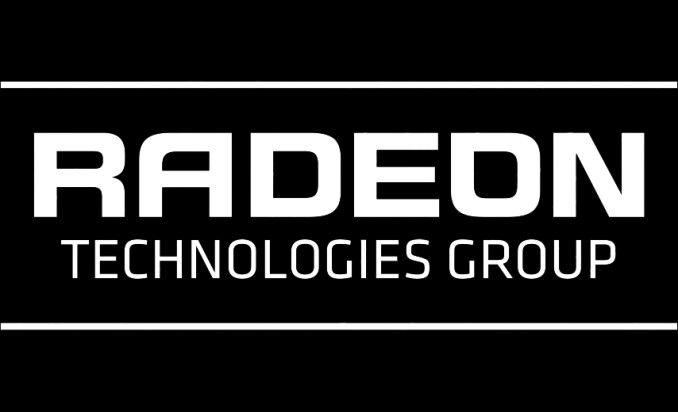
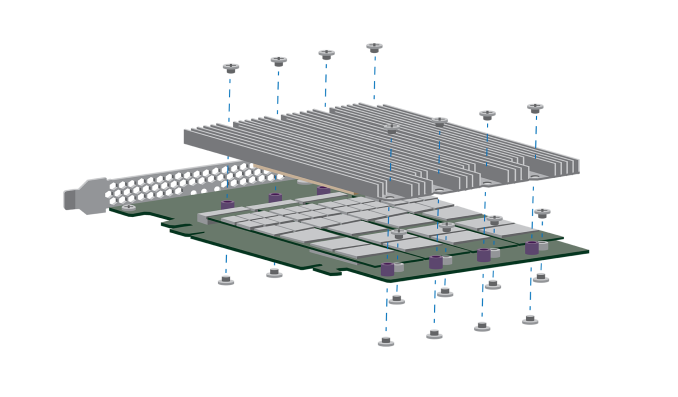
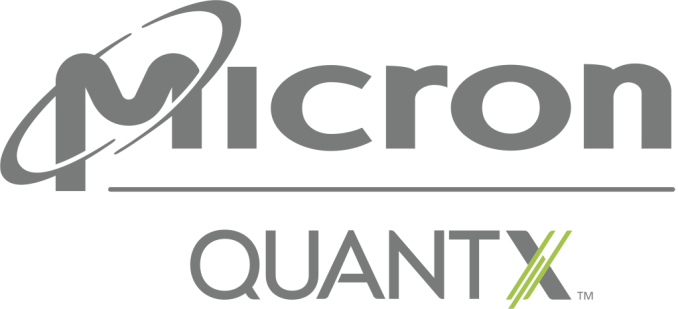


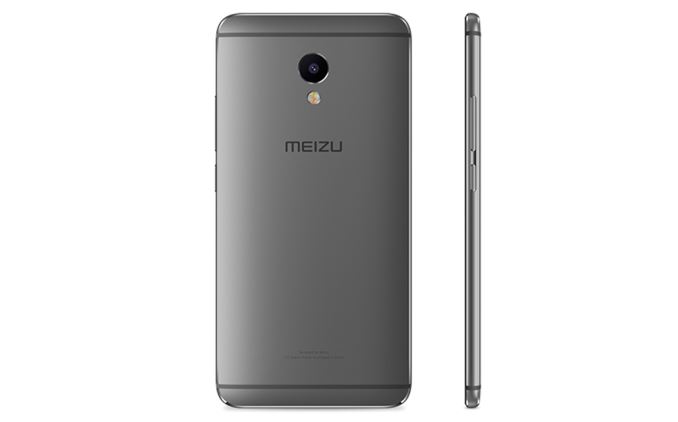
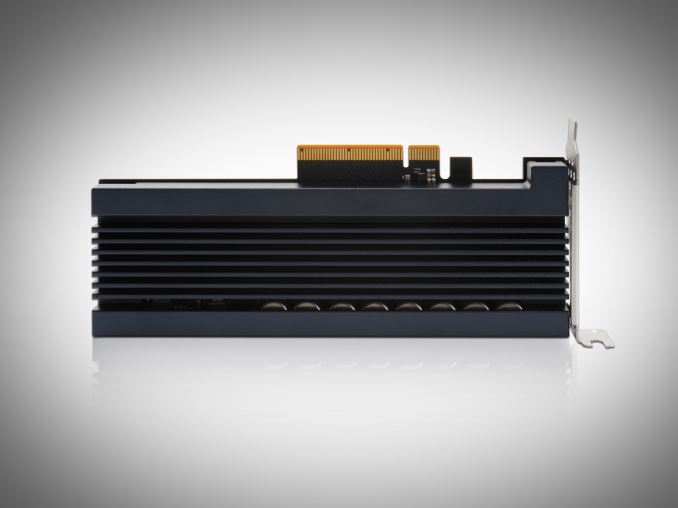
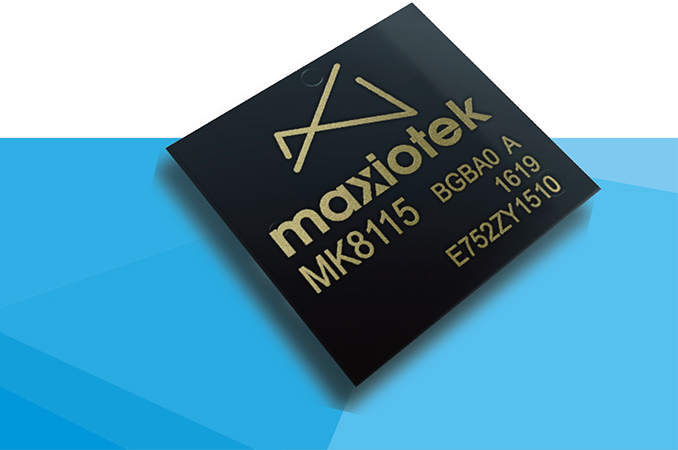

















Bookmarks